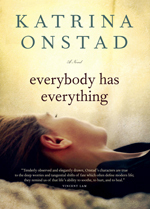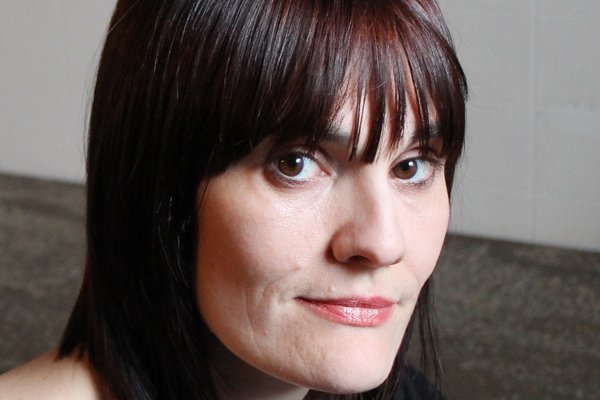Modern parenting has, arguably, become a kind of culture and industry – one that we’re all expected to happily be a part of. The narrative is already prescribed: you find a successful career, you get married, you buy a great house, you have children to share that house with. In her second novel, Everybody Has Everything (McClelland & Stewart), author Katrina Onstad challenges the importance society puts on being a parent, and explores questions about what makes a family. Are our bonds biological or emotional? And is everyone well-suited to being a parent?
Onstad tackles these issues through the story of couple Ana and James, and the 2 ½-year-old boy who they suddenly become legal guardians of when his parents get into a car accident. Finn’s dad dies in the crash, while his mom is left in a coma. Now, without warning, a couple who have been trying for years to have a child (and are currently in the throes of the adoption process), have become instant parents. Ana and James’ tidy and somewhat predictable lives are suddenly flipped upside down as they learn to care for another human being, and while James is enthusiastically up to the task, Ana’s experience is quite the opposite.
“I wanted to address this idea that we assume that any woman will rise to the occasion and everyone has the maternal gene, and just question that idea of natural, parental inclination,” said Onstad. “Some people are built for it, and many people aren’t. But what if every signal around you, every social, cultural, religious signal is saying you’ve got to do this?”
 Through Ana, Onstad shows a woman being forced into the mother role, a woman who doesn’t even realize how much she doesn’t actually want to be a parent. Although Ana and James were in the process of adopting a child, as soon as Finn comes into their lives, it’s immediately apparent that child-rearing isn’t Ana’s forté. “I feel that Ana is kind of a brave character – she’s really working through this,” explained Onstad. “But the fact that it’s not even in her consciousness that she could say out loud ‘I don’t want this’, that she’s going so far through these motions where they’re at the point where they’re almost going to adopt a kid, I think that that happens. And I think we need to think about that.”
Through Ana, Onstad shows a woman being forced into the mother role, a woman who doesn’t even realize how much she doesn’t actually want to be a parent. Although Ana and James were in the process of adopting a child, as soon as Finn comes into their lives, it’s immediately apparent that child-rearing isn’t Ana’s forté. “I feel that Ana is kind of a brave character – she’s really working through this,” explained Onstad. “But the fact that it’s not even in her consciousness that she could say out loud ‘I don’t want this’, that she’s going so far through these motions where they’re at the point where they’re almost going to adopt a kid, I think that that happens. And I think we need to think about that.”
Onstad herself is the happy mother of two children aged six and eight, and her experience couldn’t be further from that of her female protagonist. But although she chose to raise a family of her own, Onstad was inspired by the many women she knows who have made various choices about parenthood – whether they can’t have children or have decided not to. “There is a kind of ongoing question about women and their reproductive choices. […] It’s tedious and I think it can come to kind of cloud one’s choices because there’s a real pressure on women of a certain age to follow the narrative and become mothers,” said Onstad. “And a woman who doesn’t, I think, can still in many respects be looked upon as sort of monstrous.”
Being a mother to two kids was also one of the main reasons it’s been six years since Onstad’s first book, How Happy To Be hit bookshelves. She admits that fitting writing into the various parts of her life can be a challenge: “[Everybody Has Everything] was written around a professional life and a family life, in the margins of everything else. It was not slow and steady, it was sporadic and jolted.”

